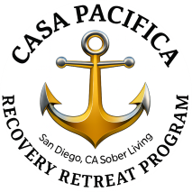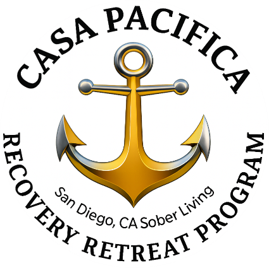How Does Structure Support Long-Term Addiction Recovery?
Table of Content
- 1 Understanding Structure in Addiction Recovery
- 2 Why Structure Is Essential in Early Recovery
- 3 The Hidden Benefits of Structure: Mental Health, Self-Esteem & Stability
- 4 Why Sober Living Homes with Structure Add Extra Value
- 5 Making Structure Your Own — Building a Balanced Recovery Routine
- 6 Structure as Prevention: Minimizing Risk and Strengthening Resilience
- 7 Long-Term Results: Why Time + Structure + Support Equals Success
Final Gambit, one of the racehorses that finished at the top of the 2025 Kentucky Derby, was trained by a man on an addiction recovery journey. According to an article published in BloodHorse, a magazine that covers the thoroughbred horse racing community, Blane Servis has been caring for Final Gambit since 2022. He was part of Stable Recovery, a special program that gives addicts a second chance in the thoroughbred industry. Servis comes from a family of racehorse trainers. Unfortunately, he succumbed to alcoholism years ago, and he struggled with sobriety until Stable Recovery provided him with the structure missing from his life.
Recovering from addiction isn’t simply a matter of willpower. The path to lasting sobriety often stretches far beyond detox or initial treatment — and what many people find hardest isn’t resisting cravings but rebuilding a stable, healthy life. That’s why structure and routine are among the most powerful tools anyone in recovery can use. Structure doesn’t feel glamorous. It doesn’t guarantee instant transformation. But it creates the stable foundation on which lasting recovery — and a new, fulfilling life — can be built.
Understanding Structure in Addiction Recovery
At its core, structure offers stability. Addiction often brings chaos: unpredictable schedules, erratic behavior, unstable relationships, and emotional turbulence. When someone enters recovery, that chaos doesn’t disappear overnight. Without an intentional framework to replace it, the void left by substances can quickly be filled with uncertainty, triggers, isolation, or stress. A consistent daily structure becomes the anchor that restores order — one manageable choice, one day at a time.
Why Structure Is Essential in Early Recovery
In early recovery, the brain, body, and emotions are still adjusting. Time that was once consumed by substance use becomes empty hours. For many, the absence of routine can trigger restlessness, anxiety, or cravings. Studies of early-recovery populations show that unoccupied time — especially during idle moments — is a common relapse risk.
Creating a structured daily routine helps fill those hours with purpose and direction. When each day follows a predictable rhythm — with scheduled meals, sleep, work or responsibilities, wellness activities, community or peer support — the mind finds stability. The body responds with improved sleep, regulated energy levels, and better mood. With structure, the chaos that once surrounded addiction begins to fade.
Moreover, structure helps rebuild self-discipline. Addiction often rewires priorities: substances come first, everything else becomes secondary. Recovery requires reordering those priorities. By committing to regular routines — healthy habits, meetings, chores, fitness, rest, recovery work — individuals retrain their decision-making and rethink their values. Over time, small daily actions accumulate into habits, and habits build a new identity: one rooted in responsibility, care, and self-respect.
The Hidden Benefits of Structure: Mental Health, Self-Esteem & Stability
Adopting structure does more than reduce relapse risk; it supports deeper healing. Businesses, clinicians, and sober living experts consistently note that structured recovery environments help reduce anxiety, support emotional regulation, and rebuild confidence.
When life transitions from unpredictability to routine, people often notice early improvements: sleep becomes more consistent, stress less overwhelming, moods stabilize. Over time, this cultivates self-esteem and a sense of competence: “I can trust myself,” “I can follow through,” “I can show up.” For many, these are the foundational victories that sustain long-term sobriety and personal growth.
Structure also creates space for healing — physically and psychologically. Consistent schedules allow for regular exercise, healthy meals, adequate rest, and recreation or hobbies. These elements help balance the body and mind, reduce cravings, relieve stress, and rebuild overall well-being. The recovery journey becomes not just about abstinence, but about holistic health.
Why Sober Living Homes with Structure Add Extra Value
For many who emerge from treatment, trying to live “independently” immediately can be overwhelming. The temptations, responsibilities, and old patterns may still linger. A sober living home that enforces structure — with clear expectations, accountability, community, and routine — transforms recovery from a fragile experiment into a stable lifestyle.
In such environments, residents live among peers with the same goals. They share responsibilities. They support each other. They follow house guidelines. They attend meetings. They engage in daily habits that promote sobriety and wellness. In effect, sober living homes create a buffer — shielding individuals from relapse triggers while providing a safe space to redefine daily living, rebuild habits, and reconnect with purpose.
This type of structured environment also builds social support, accountability, and community — all of which research suggests significantly improve long-term recovery outcomes.
Making Structure Your Own — Building a Balanced Recovery Routine
Structure does not need to be rigid or monotonous. Rather, it should be intentional, flexible, and human. The goal is to replace chaos with stability, not replace freedom with rigidity. Here’s how to build a recovery routine that feels supportive — not stifling:
- Begin with the basics: regular wake-up and sleep times, meals, and hydration. These may seem small, but they ground your body and mind.
- Include daily or near-daily recovery activities: meetings, check-ins, accountability partners, recovery work, or therapy.
- Add healthy habits: exercise, outdoor time, hobbies, creative or recreational pursuits — things that bring joy, purpose, and physical wellness.
- Keep structure balanced: plan personal and social time, rest, responsibilities, and self-care.
- Stay connected: build a sober community, attend peer support groups, engage in healthy social relationships.
- Set achievable goals: short-term (daily or weekly) and long-term (career, wellness, personal growth), and revisit them regularly.
- Allow flexibility: life is unpredictable. A good routine adapts without losing core stability — like treatment, wellness, work, rest, community.
Over time, this blend of consistency and purpose becomes the new normal. The early difficulties fade. The structure becomes internalized. A sober lifestyle begins to feel like living again — only better.
Structure as Prevention: Minimizing Risk and Strengthening Resilience
Structure is more than a convenience — it’s a proven protective factor. Life unpredictability, intense emotions, idle time, and environmental stress are major relapse triggers. A structured lifestyle reduces exposure to those triggers.
Moreover, by embedding healthy habits and coping mechanisms into everyday life — exercise, mindfulness, community, purposeful work — individuals build resilience. When life challenges arise (stress, relationships, loss, emotional strain), they have the inner strength, routines, and support to respond without returning to old patterns. Structure becomes a safety net — not infallible, but one that dramatically improves odds of lasting recovery and emotional well-being.
Long-Term Results: Why Time + Structure + Support Equals Success
The journey of recovery is rarely linear. There are good days, difficult days, and days where the old habits feel close. But research and real-world experience repeatedly show that when structure is paired with support — whether from sober living, peer community, therapy, or coaching — longevity in sobriety improves. Lives stabilize. Mental health improves. Purpose returns.
Sobriety becomes more than a struggle — it becomes a sustainable lifestyle. A man learns to trust himself. He rebuilds relationships. He gains confidence. He finds meaning beyond substances. That transformation doesn’t happen overnight — but it does happen when structure becomes routine, support becomes community, and recovery becomes integrated into daily life.
At Casa Pacifica, we believe in the power of a structured sober living home environment. We see what it does: one day at a time, one habit at a time, one life rebuilt at a time. If you or someone you love is ready to leave chaos behind and step into a stable, supportive, purpose-driven sober life, structure may be the most powerful tool you’ve never used.
Contact us today, Casa Pacifica is here to support you every step of the way.









